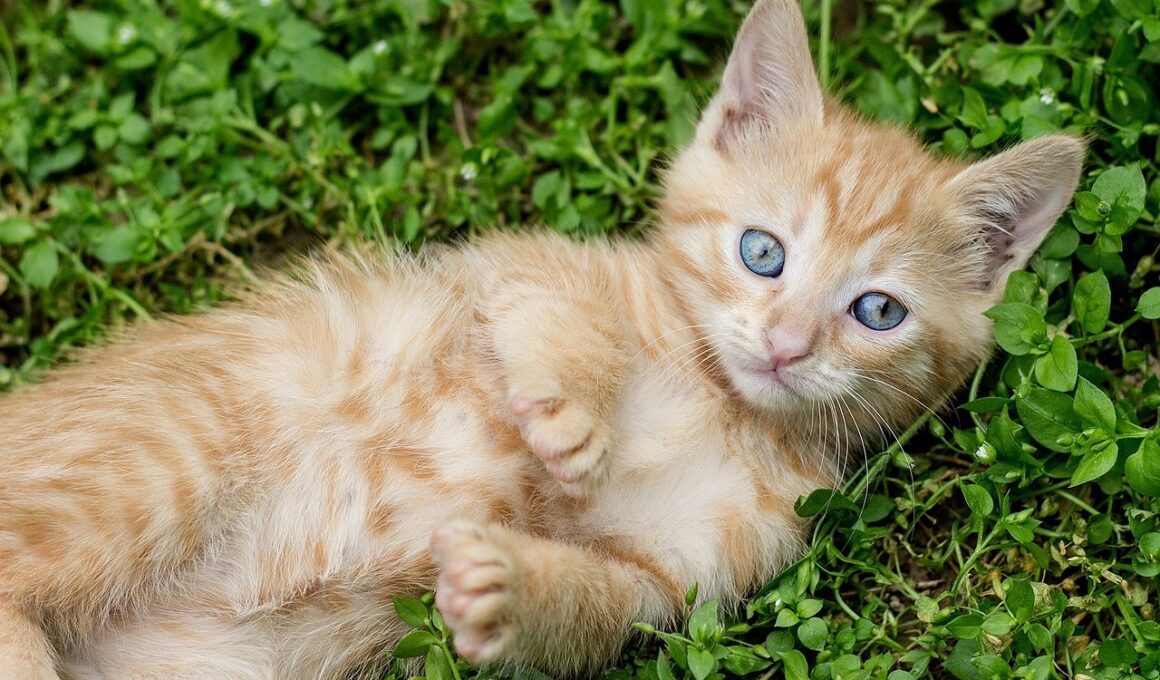Inside a Day at a Cat Rescue Organization Shelter
Visiting a cat rescue organization shelter is an eye-opening experience. Every day this shelter opens its doors to countless cats in need of love and care. Volunteers arrive early in the morning to prepare for the day. They organize feeding schedules, clean up the areas where the cats are housed, and ensure that each feline has fresh water. The atmosphere is busy yet remarkable. Many visitors come to adopt a pet, while others simply want to volunteer their time. Each cat has its own unique story, and the foster caregivers are often the first to encounter these furry friends on their path to recovery. Understanding their backgrounds helps potential adopters form emotional connections with these delicate souls. This shelter typically houses various breeds and sizes of cats, from playful kittens to more reserved adults. There is an understanding that each cat deserves a loving home and a family. The dedication of the volunteers and shelter staff is palpable as they work tirelessly to ensure all cats feel cared for and valued. The joy of seeing a cat find its forever home is truly rewarding and keeps everyone motivated and focused on their mission.
The shelter operates under strict guidelines that prioritize the well-being of the cats. Adopting a cat involves an application and approval process designed to ensure that fur babies find suitable homes. Potential adopters fill out detailed forms regarding their lifestyles and living arrangements. The goal is to match each cat with the perfect home. After an application review, a meet-and-greet session takes place. This gives both cats and adopters time to bond. Volunteers play a pivotal role in this process, offering insights into each animal’s personality. They help assess which cats will thrive in different environments and with specific families. Such attention to detail makes a significant difference in the longevity of these adoptions. Many organizations also follow up afterwards to offer support and to check how the cat is settling in. This is beneficial for first-time cat owners or those adjusting to life with a new family member. Education is essential, and workshops often take place in shelters. Topics range from cat care basics to understanding feline behavior. This shared knowledge fosters happy and healthy home environments for adopted cats, enhancing the overall experience and long-term success of adoptions.
Daily Activities and Responsibilities
A typical day at the shelter includes various activities crucial for the cats’ care. Feeding is one of the primary responsibilities undertaken by volunteers and staff. High-quality cat food is prepared daily to cater to the dietary needs of the cats. Each feeding is done in a controlled environment to monitor the cats’ health and ensure they are eating properly. Additionally, grooming sessions are scheduled to keep the cats clean and comfortable. Cats, especially long-haired breeds, require regular brushing to prevent matting. Such grooming also enables volunteers to check for skin conditions or parasites, ensuring that their health is tended to adequately. The socialization of the cats is equally important. Volunteers spend considerable time interacting with each cat, providing affection and understanding. This interaction helps the cats become more adoptable and confident around people. Many volunteers even initiate playtime sessions, using toys to stimulate playful instincts in the cats. The shelter’s cats thrive in an environment that promotes interaction and community, making the shelter feel like a family. All these duties played a part in ensuring that every rescued cat feels worthy of love and affection, which makes the role of volunteers incredibly vital.
Moreover, the shelter often welcomes guests who want to help but may not be able to adopt. Community engagement events are held regularly to raise awareness about the plight of homeless cats. These events can include educational seminars, fundraising activities, or cat-themed social gatherings. Many volunteers prepare informative pamphlets to distribute during these events. Insights about caring for cats, the adoption process, and the benefits of spaying and neutering are shared with attendees. Approaching the local community helps strengthen ties and fosters support for the rescue efforts. Local businesses sometimes partner with shelters by hosting donation drives, encouraging patrons to contribute supplies. This community-centered approach benefits everyone: cats receive necessary goods, and members of the community learn the value of animal welfare. It’s an inspiring sight to see people come together for such a noble cause. Different shelters also share their success stories via social media, highlighting adoptions and encouraging participation. This not only showcases the cats needing homes but also raises funds and supplies for ongoing needs. Collectively, these measures enhance the shelters’ ability to rescue even more cats and continue their mission effectively.
Challenges Faced by Cat Shelters
However, it is important to acknowledge the challenges faced by cat rescue organizations. Limited resources, including financial constraints, can often hamper operations. Shelters rely heavily on donations from individuals and businesses to keep functioning. Essential supplies like cat food, litter, and medical care can stretch a budget thin. Underfunding can lead to overcrowding, impacting the quality of care provided. When the shelter becomes too filled, some cats may remain unadopted for extended periods, which can lead to additional emotional and physical stress for both staff and animals. The constant push for funds also takes a toll, as it requires volunteers to remain active in fundraising efforts, detracting from time they could devote to caring for the cats. Additionally, finding qualified people who can help manage day-to-day operations presents another hurdle. Many volunteers are untrained individuals; although passionate, they may lack essential skills for effective shelter management. More importantly, the stigma surrounding rescue cats can deter potential adopters from considering them. Common misconceptions often lead to fears about behavioral issues, health concerns, or litter box problems. Addressing these fears requires continuous educational efforts. It’s paramount that potential adopters are equipped with accurate information.
In light of these challenges, aspiring cat rescue organizations find creative solutions to thrive. Fostering programs are growing in popularity, allowing volunteers to care for cats in their homes. This approach not only provides more space in shelters but also helps cats adjust to home life, making them more adoptable. Additionally, virtual fundraising campaigns are gaining traction—these campaigns utilize social media and online platforms to reach larger audiences. Crowdfunding has proven effective in gathering necessary financial support and raising awareness about available cats for adoption. These programs have the power to shift the narrative surrounding rescue cats, promising them brighter futures outside the shelter. Partnerships with local veterinarians can result in lower costs for medical treatments and spaying or neutering programs. Local businesses can also host fundraising events, donating a portion of sales to shelters. Such collaborations are crucial for sustainability, enabling shelters to focus more on the animals. By working together with community members and institutions, cat rescue organizations can foster environments filled with love and compassion, enhancing the lives of every feline awaiting a forever home. Such efforts go a long way in building lasting relationships and understanding in the community.
Success Stories and Impact
Ultimately, the success of each cat adoption is a testament to the hard work and dedication of the shelter. Seeing a cat leave with a loving family evokes joy not just for the new owners but also for the volunteers who invested time and emotion into each cat’s journey. Stories often circulate in the shelter of various felines that were brought back from the brink of despair to thriving, healthy pets. From shy kittens learning to trust humans to elderly cats finding retirement homes, each tale inspires extraordinary hope and determination. The impact this work has on the local community is also significant. Increased awareness surrounding feline welfare leads to more people opting to adopt rather than purchase pets from breeders or pet stores. As successful adoptions continue, it not only uplifts spirits but also encourages former adopters to become advocates for the cause. Alumni cats often appear at community events, showcasing their wonderful transformations and inspiring others to consider adoption. Success stories also foster a strong network of support among past adopters, leading to volunteer opportunities and connections that strengthen the shelter’s mission. This consistent positive reinforcement helps sustain the organization’s efforts and spawn more cat rescue endeavors in the area.
As each day unfolds within a cat rescue organization shelter, a commitment to serving and uplifting felines in need shines brightly. Volunteers, donors, and staff create an environment where compassion, resilience, and hope converge to foster significant change. The cumulative effort of rescuing an animal and preparing it for a future filled with love embodies the very essence of these organizations. Furthermore, sharing stories about the cats encourages empathy and understanding within the community. As the shelter opens its doors to learn about animal welfare, it cultivates a culture of care. There are many different ways these organizations can make an impact, whether through sharing success stories, building a strong volunteer base, or creating community education initiatives. As a city’s cat rescue culture flourishes, more compassionate stories emerge, building a legacy of love and action. Each cat saved from a challenging situation adds to a legacy of hope. Today, cat lovers everywhere can see how, united by a shared love of animals, we have the power to make a difference, not just for individual cats but for entire communities. This ongoing journey continues touch lives in profound ways, connecting people and cats alike across many years.”


